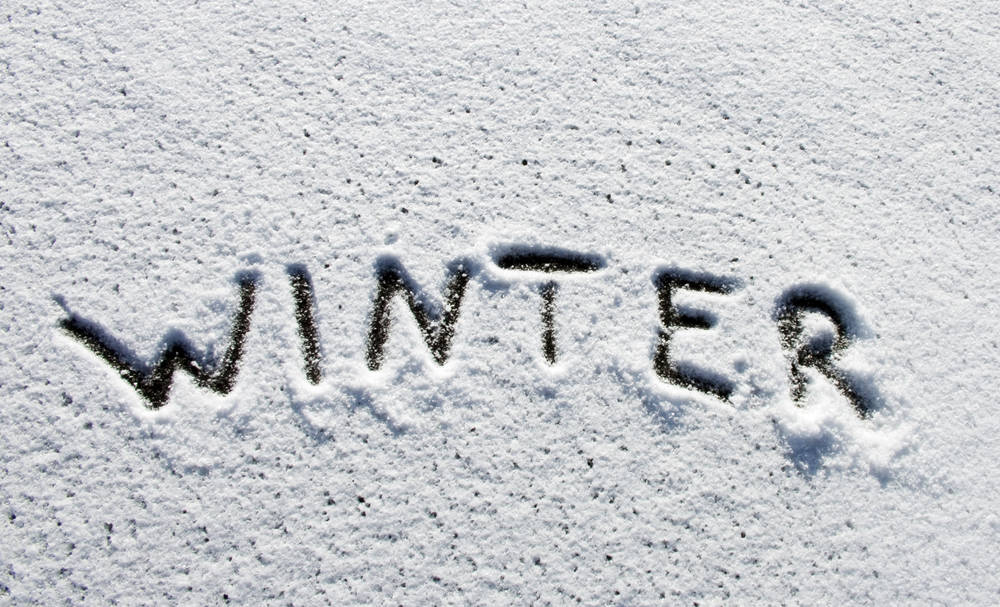Get Ready for Winter
December 9, 2020 | Filed under: Newsletter Articles

We hope you are all staying healthy and safe as 2020 comes to a close. As winter approaches and temperatures drop, take care of your roof. It takes a lot of beating from nasty weather, and snowfall can put a lot of weight on it. The amount of rain, snow, and sleet we get in the winter can be tough on your roof and gutters.
Get Ready for Cold Temperatures
Ventilating your roof can prevent ice dams, which happen when water melts on your roof and refreezes along the eave and in your gutters. This water can damage your gutters and let ice and water leak into your attic. Unless you prevent ice dams, they can continue to build up as they melt and refreeze. You can prevent ice dams by changing your roof’s temperature through attic ventilation or a rooftop heating system. One method is to install a “cold roof” and ventilate it to match the outside temperature. While cold roofs are a great solution, they require significant planning and may not work for every roof.
Snow buildup is similar to ice dams but stays on the roof instead of sliding to the gutters. While ice dams pose a risk to your gutter system, snow buildup poses more risk to your roof. As snow builds up on a roof, it can suddenly fall in an avalanche, dumping on an unlucky person or vehicle. To prevent this, consider installing snow guards.
Snow guards are usually a bar system or a simple guard system. Bars span from rib to rib on a metal roof and break up the snow before it can clump up. Guards mount directly to panels, are smaller, and blend in better with your roof.
Snow removal is another concern during the winter months. While snow buildup can be dangerous and is mainly preventable with snow guards, some homeowners try to remove snow from their roofs manually. This is unsafe and unnecessary for most roofs.
One benefit of metal roofing is that in most cases, the snow will slide right off once the sun’s heat passes through the snow-load and warms the metal. While asphalt shingle roofs retain snow for much longer, houses with metal roofs are usually clean before their neighbors.
Even Mild Climates Can Experience Winter’s Wrath
Another thing to consider during the winter months is the damage cold temperatures can do to your roof. As temperatures drop, asphalt or other temporary shingles may crack or even fall off. Metal roofing effectively deals with cold weather but should still be inspected by a roofing professional if you suspect any damage has occurred.
Check your attic for increased moisture, a sign of poor ventilation, or possible leaks. The last thing you want during a cold winter is a leaky roof. High moisture levels in an attic create a risk of dangerous mold and make the insulation less effective. Temporary asphalt roofing is always susceptible to water damage.
A reality that all metal roofs face year-round is thermal movement. The metal will naturally expand and contract as it heats up and cools down. With metal roofs that have exposed fasteners directly through the metal, this movement can cause the fasteners to loosen, creating opportunities for leaks.
While a metal roof may be waterproof under normal circumstances, water may find a way in when temperature shifts dramatically. Although thermal expansion is a real challenge for exposed fastener metal roofing, our higher quality metal roofs with concealed fasteners and interlocking panels allow for the movement with no ill effects.
Prevent Damage to Your Home This Winter
If you take the proper precautions, you won’t have to fret about winter weather damaging your roof or gutters. If you have questions about how winter weather impacts your roof, contact one of our roofing professionals in your area for help.
Every roof is different, and you may not face any of these problems, but be prepared for the damage Old Man Winter can do to your roof.
